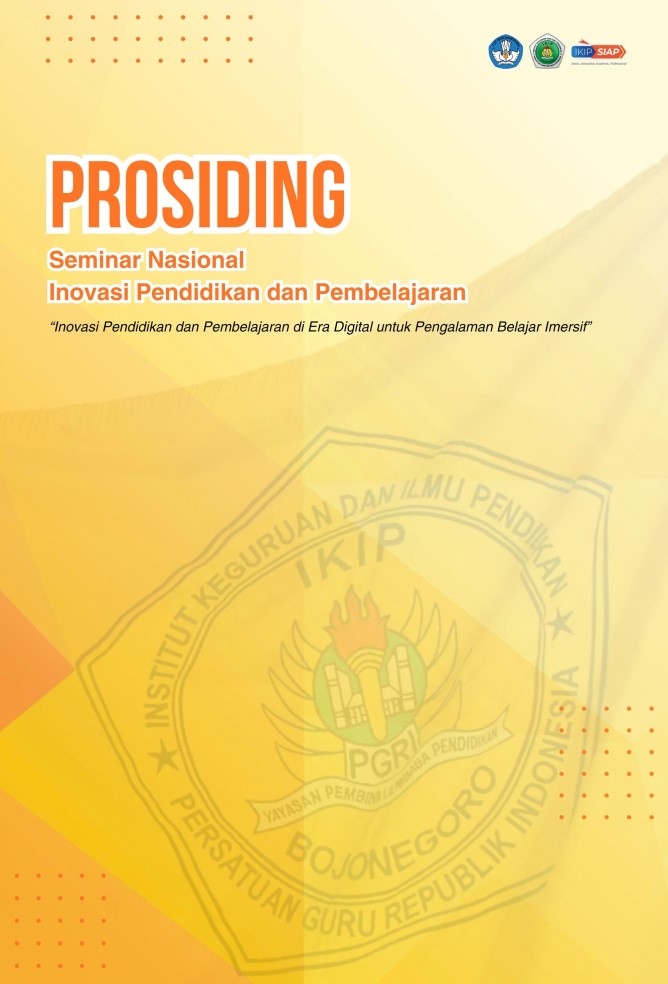Enhancing Fourth Grade Students’ Speaking Skills through Digital Storytelling at SDN Sumodikaran 1
Keywords:
Digital storytelling, Learning, Speaking abilityAbstract
Abstract—Technology is evolving rapidly, In the globalized world of education technology has a very important role with the existence of technology educators can further streamline time for study activities and practice inside the classroom and can help improve educational standards. However, there are still many shortcomings in student learning outcomes. This is an impetus to develop more innovative learning models such as Digital storytelling. The issue of this research is the deficiencies in students' english speaking skills in grade 4 at SDN Sumodikaran 1, students have difficulty in speaking practice due to limited vocabulary, In addition due to the unfavorable environment, students also have no interest in learning to speak English. With this study, the author intends to develop students' speaking ability utilizing the Digital storytelling approach. This case study is a research of classroom action and the data collection is done by mixed methods such as observation, interview, test and questionnaire. The findings of this study can help improve learning innovations that are more interactive and fun. In this study students participated directly in Digital storytelling so that students' speaking skills will be honed and students have the confidence to perform.
Keywords— Digital storytelling, Learning, Speaking ability
abstrak—Teknologi berkembang dengan cepat, Dalam dunia pendidikan global teknologi memiliki kedudukan yang sangat penting, dengan adanya teknologi para pendidik dapat lebih mengefektifkan waktu untuk kegiatan belajar dan praktek di dalam ruang kelas serta dapat membantu meningkatkan standar pendidikan. Namun, masih banyak kekurangan dalam hasil belajar siswa. Hal ini menjadi pendorong untuk mengembangkan model pembelajaran yang lebih inovatif seperti Digital storytelling. Masalah dari penelitian ini adalah adanya kekurangan dalam kemampuan berbicara bahasa Inggris siswa kelas 4 di SDN Sumodikaran 1, siswa mengalami kesulitan dalam praktek berbicara karena keterbatasan kosakata, selain itu karena lingkungan yang kurang mendukung, siswa juga tidak memiliki minat untuk belajar berbicara bahasa Inggris. Dengan penelitian ini, penulis bermaksud untuk mengembangkan kemampuan berbicara siswa dengan menggunakan pendekatan Digital storytelling. Studi kasus ini merupakan penelitian tindakan kelas dan pengumpulan data dilakukan dengan metode campuran seperti observasi, wawancara, tes dan kuesioner. Temuan dari penelitian ini dapat membantu meningkatkan inovasi pembelajaran yang lebih interaktif dan menyenangkan. Dalam penelitian ini siswa berpartisipasi langsung dalam Digital storytelling sehingga kemampuan berbicara siswa akan terasah dan siswa memiliki rasa percaya diri untuk tampil.
Kata kunci—Digital storytelling, Pembelajaran, Kemampuan berbicara
References
Choo, Y. B., Abdullah, T., & Nawi, A. M. (2020). Digital storytelling vs. oral storytelling: An analysis of the art of telling stories now and then. Universal Journal of Educational Research, 8(5), 46-50. doi: 10.13189/ujer.2020.081907.
Fitrianingsih, A. (2017). A study on pair work and storytelling for teaching speaking fluency. Jurnal Pendidikan Edutama, 4(1), 1-8.
Jamshed, S. (2014). Qualitative research method-interviewing and observation. Journal of basic and clinical pharmacy. doi:10.4103/0976-0105.141942.
Knott, E., Rao, A. H., Summers, K., & Teeger, C. (2022). Interviews in the social sciences. Nature Reviews Methods Primers, 2(1), 73.
Mazhar, S. A., Anjum, R., Anwar, A. I., & Khan, A. A. (2021). Methods of data collection: A fundamental tool of research. Journal of Integrated Community Health, 10(1), 6-10. doi:https://doi.org/10.24321/2319.9113.202101.
Moradi, H., & Chen, H. (2019). Digital storytelling in language education. Behavioral sciences, 9(12), 147.
Patten, M. L. (2016). Questionnaire Research: A Practical Guide (Fourth ed.).
Purnama, Y. I., & Nurdianingsih, F. (2019). The impact of higher order thinking skills (HOTS) instructions in teaching EFL speaking skill from the perspective of students’ motivation. Lingua Cultura, 13(4), 313-319. doi: 10.21512/lc.v13i4.6105.
Rahman, M. (2016). The Advantages and Disadvantages of Using Qualitative and Quantitative Approach and Methods in Language "Testing and Assessment" Research: A Literature Review . Journal of Education and Learning, 6(1), 102-112. doi:https://doi.org/10.5539/jel.v6n1p102.
Robin, B. R. (2016). The Power of Digital Storytelling to Support Teaching and Learning. Digital education review, 17-29.
Smeda, N., Dakich, E., & Sharda, N. (2014). The Effectiveness of Digital Storytelling in the Classroom: A Comprehensive Study. Smart Learning Environments, 1, 3. doi: 10.1186/s40561-014-0006-3.

